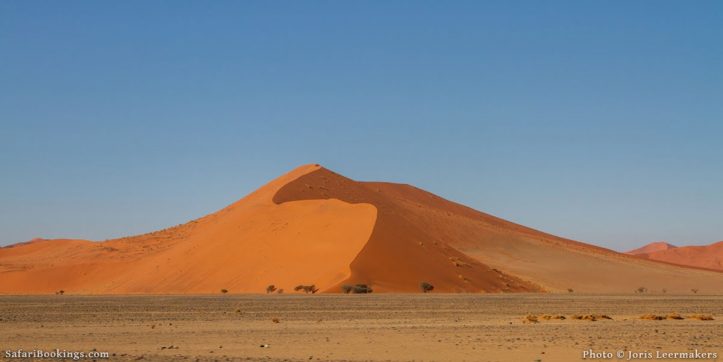
Visiting Sossusvlei: A Guide to the Sand Dunes of Namibia
 By Anthony Ham
By Anthony Ham Anthony is a renowned Africa expert and author of the Lonely Planet guide to Botswana and Namibia.
The Namib is the oldest desert on earth. It may also be the most beautiful. In the southern part of this desert, in what was once a little-known corner of Namibia, the sand dunes of Sossusvlei come close to perfection. These dunes are nestled between the wild Skeleton Coast and the gravel-faced Naukluft Mountains. For centuries, the wind here has sculpted sharp ridges of sand that form faultless arcs rising from valley floors to heights over 300m/984ft. Each dune is different and being constantly reshaped by the wind. It is a world in motion, of sand dunes that seem to go on forever beyond the far horizon. It is the desert that we dreamed of as children.
1. Sesriem
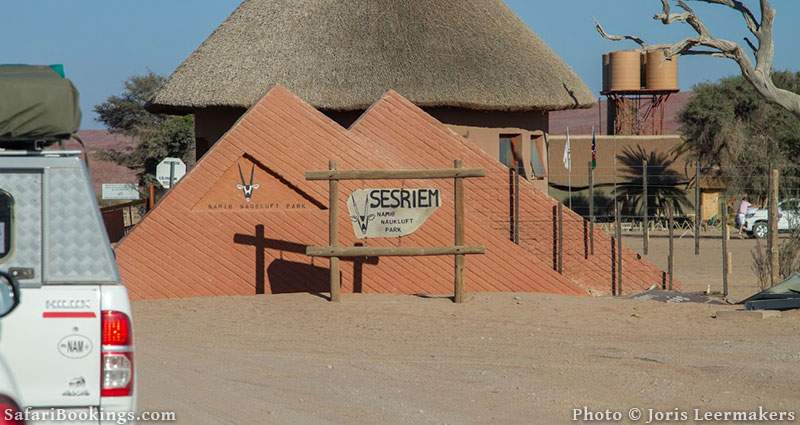
Named after nearby Sesriem Canyon, the isolated desert outpost of Sesriem is the gateway to Sossusvlei. Reaching here involves traveling long and lonely roads across an often-empty landscape. Sesriem is about 360km/220mi southwest of Windhoek (the Namibian capital) and 345km/215mi southeast of Swakopmund. The settlement itself is somewhat underwhelming. It revolves around two essential functions: the petrol station and the park office for Namib-Naukluft National Park (where the dunes are located).
The park office is where you pay your park fees and obtain your entry permit. Accommodations in Sesriem are limited, but there are numerous choices scattered for miles around. These are often far from the settlement itself. The best have glorious views of the Sossusvlei dunes that rise like ramparts southwest of Sesriem.
2. Sossusvlei
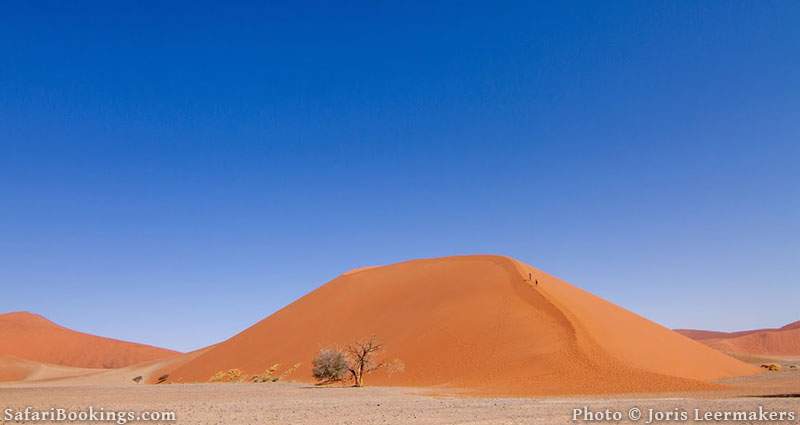
When you think of the sand dunes of Namibia, you’re probably thinking of Sossusvlei. Queues form well before dawn at the park entrance. To allow you to make the most of the morning light, your vehicle details will be recorded as you enter, but you do not need to pay until you leave the park later in the day.
The road into the world of dunes follows the path of the dry Tsauchab River, a narrowing expanse of table-flat sand with sand dunes rising from either side. Watch for brown hyenas scurrying away into the hills at first light. At the northeastern end of the valley, Elim Dune requires a 5km/3mi detour. Visit this dune later in the day, as it has the best summit for watching the sunset.
Farther in, side roads branch off the paved road to the base of dunes, one after the other, waiting to be climbed. Dune 45, so named because it is 45km/28mi from the Sesriem entrance, is one of the more popular. Farther west again, the 2WD car park is the starting point for shuttle services that go farther into the dunes to the west. The car park is also the start of the walk to Hidden Vlei. This 4km/2.5mi return hike over the sands is marked by white posts and takes you into an eerily desolate bowl, surrounded by some of the highest of the Sossusvlei dunes. By the time you reach the 4WD car park, back in the main valley or pan, dunes crowd in all around.
3. Deadvlei
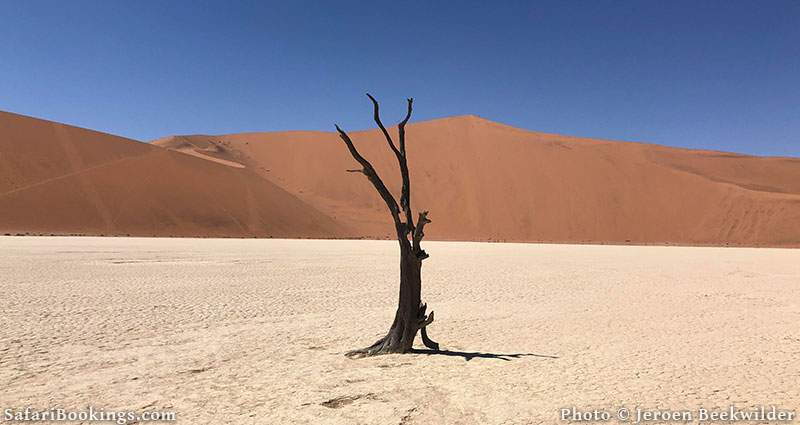
If you were drawn here by images of charcoal-black skeleton trees across a sheet of sand, all signs of life dwarfed by golden mountains, Deadvlei is your place. This is the defining image of the sand dunes of Namibia, and one of the signature shots in southern Africa. At midday, the scene is apocalyptic. The white-hot sand in the glare of the desert sun looks like an over-exposed photograph. The silhouetted trees stand like petrified echoes of life in a wasteland of frightening power.
In deep contrast, early in the morning or late in the afternoon, the warmth of the golden sands and the relief of lengthening shadows bring depth and a wholly different dimension to the experience. And it’s in Deadvlei that you can see Big Daddy Dune, the highest of the Sossusvlei dunes at 325m/1,066ft. The sandy track to Deadvlei begins at the 4WD car park and is signposted. It’s a 3km/2mi return walk.
4. Sesriem Canyon

Off a side road between Sesriem settlement and Sossusvlei, Sesriem Canyon is a complement to the big horizons and moving sands of the dunes elsewhere in the area. Deep, narrow trails cut between the canyon’s vertical cliffs, which are not visible almost until you stand on the rim. Sesriem Canyon has strange rock formations, secluded pools of water and a tight labyrinth of trails.
Sometimes the experience is claustrophobic as the walls seem to close in. At other times it feels intimate, a secret world of shade and shadows nestled in the heart of a desert that stretches for hundreds of miles in most directions. The canyon is formed from sand and gravel that have merged and solidified over millions of years. There is a sense of permanence here that contrasts sharply with the shifting sands of the dunes
Practicalities
Want To Visit Sossusvlei?
Click on the button below to compare Sossusvlei safaris offered by top-rated tour operators.
 By Anthony Ham
By Anthony Ham Anthony is a renowned Africa expert and author of the Lonely Planet guide to Botswana and Namibia.
More About This AuthorSafari Tours to Namibia
-
![14-Day Namibia Flying Safari]()
14-Day Namibia Flying Safari
$15,499 to $25,099 pp (USD)
Namibia: Private tourLuxuryLodge & Tented Camp
You Visit: Windhoek (Start), Zannier Reserve, Kulala WR, Skeleton Coast NP, Kaokoland, Etosha NP, Windhoek (End)

Wayfairer Travel
5.0/5 – 201 Reviews
-
![12-Day Namibia Highlights - Sossusvlei, Erongo & Etosha]()
12-Day Namibia Highlights - Sossusvlei, Erongo & Etosha
$2,893 to $3,126 pp (USD)
Namibia: Self-driveLuxuryLodge & Hotel
You Visit: Windhoek (Start), Kalahari Region, Sossusvlei (Sand Dunes), Swakopmund (City), Erongo Mountains (Mountain Range), Etosha NP, Windhoek (End)

Viatu
5.0/5 – 137 Reviews
-
![11-Day Namibia Big 5 Wildlife Safari Tour (Lodging)]()
11-Day Namibia Big 5 Wildlife Safari Tour (Lodging)
$3,905 pp (USD)
Botswana & Namibia: Private tour
Mid-range LodgeYou Visit: Windhoek (Start), Okonjima NR, Twyfelfontein (Rock Art), Etosha NP, Grootfontein (Town), Divundu (Town), Kasane (Town), Kasane Airport (End)

Safari World Tours
5.0/5 – 6 Reviews



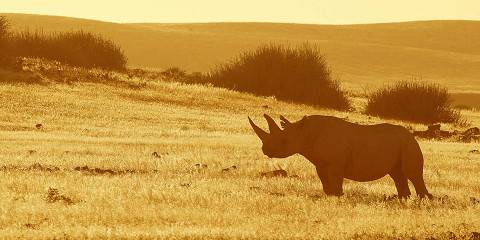


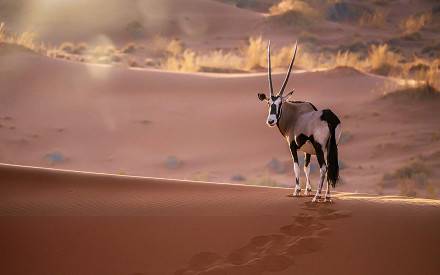
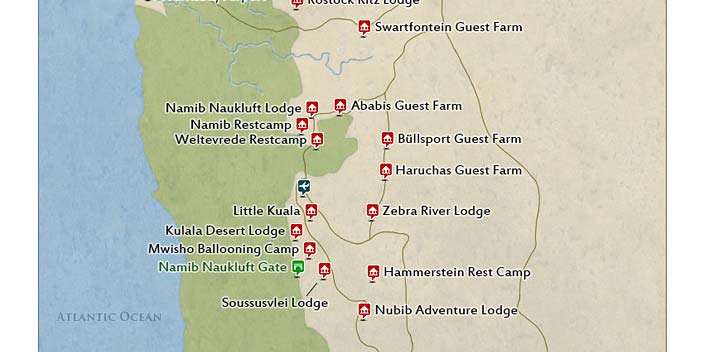
 Subscribe to our newsletter
Subscribe to our newsletter
 Follow us on Instagram
Follow us on Instagram





